Every once in a while it is necessary to get the details.
The following article is reposted with permission from John Kapensky via GovLoop. John is a Senior Fellow, IBM Center for The Business of Government in Washington, D.C.
WHY ISN’T PERFORMANCE INFORMATION BEING USED?
Champions of performance management in government are confounded. After decades of trying to integrate the use of performance information into agency decision-making, it still isn’t happening on as broad a scale as once hoped.

Background. A recent GAO study conclude that the “use of performance information has not changed significantly” in surveys of federal managers between 2007 and 2013. More specifically:
- “. . . only two [of the 24 major] agencies – OPM and the Department of Labor – experienced a statistically significant improvement in managers’ use of performance information.” And four experienced a decrease.
- But “SES managers used performance information . . . more than non-SES managers both government-wide and within each agency.” And in 9 of the 24 surveyed agencies, the gap was statistically significant.While Congress was able to mandate the collection and reporting of performance information via the 1993 Government Performance and Results Act, there hasn’t been a successful strategy to get managers to use the information. The Bush Administration tried, by focusing on program-level measures. The Obama Administration tried, by focusing on cross-agency and agency-level “priority goals,” supplemented with quarterly progress reviews. But the GAO survey doesn’t show any real changes over time.
So Now What Do We Do? GAO’s report offered some “better practices” that it thinks would help, based on some of its past work and observations. These included a series of “effective practices” such as improving the usefulness of performance information and better communicating performance information. These practices may help. However, a recent article (paywall) by Jeanette Taylor, a professor at the University of Western Australia, offers some new insights on what leaders might do differently. She examines the “lack of use” challenge from a different perspective – organizational culture. In her research, she found “the effects of performance information on organizational performance depend on the organization’s culture,” and that “organizational culture . . was the dominant antecedent of performance information use,” and that “. . . different types of cultures adopt performance management differently.”Her research tries to unbundle the distinctions in order to provide a roadmap of the different ways leaders need to approach the use of performance information in their organizations.
Four Types of Organizational Cultures. Drawing on the work of other academics, she highlights four distinct models of organizational culture:
- The Individualistic Culture. This type of organization stresses individual effort and skill, and a belief in competition. It may, for example, adopt performance incentive structures.
- The Egalitarian Culture. This culture emphasizes a high sense of belonging to a group. Staff in this kind of agency would be more receptive to performance dialogues instead of incentives.
- The Hierarchical Culture. This type of organization stresses well-defined rules of social interaction. Employees and managers here will likely want performance management to be aligned with the professional and technocrat core of the organization.
- The Fatalist Culture. Employees are skeptical about organizational prescriptions for human betterment and may “engage in ritualistic performance management exercises” (e.g., passive-aggressive compliance with requirements: “Just tell me what you want me to do and I’ll do it”).
In practice, real organizations do not fall neatly into one or the other of these models. But understanding the distinctions suggest different implementation strategies.
Three Layers of Organizational Culture. Fellow academic Edgar Schein differentiates three levels of organizational culture that exist within each of the four types of cultures.
- Observable Artifacts. In this layer, visible characteristics that an outside observer can see might include office layout, dress code, observable routines, and published documents. Some academics see routines as “the critical factor in the shaping of behavior.” Learning forums are examples of organizational routines, as are strategic planning and benchmarking. Interestingly, Taylor says that “routines can promote continuous change if they occur regularly, the organizational context support the changes, and “professional employees have discretion in the way they perform their tasks.
- Espoused Values and Beliefs. This layer is comprised of documented norms, ideals, goals, and aspirations of the organizational group. Taylor says: “A clear, understandable, and distinctive organizational mission has been found to be positively related to employee mission valence.” She also observes: “The development of a common language, particularly for key concepts like performance indicator and benchmarking, can contribute to the successful use of in-project measurement.”
- Underlying Assumptions. This layer is comprised of unconscious, taken-for-granted, non-negotiable beliefs and values that influence how group members think and feel about things and guide their behavior. This is the hardest layer for outsiders to influence because “. . . performance information involves subjective interpretation by the managers who acquire and use it,” and “Performance management requires that judgments be made on what to measure, how to measure and interpret it, what determines success and failure, and what information is relevant or important.” As a result, an organization’s underlying culture “can influence how it views and behaviorally responds to performance management.”
Just ask any VA executive over the next two decades about how its underlying culture affects their perception of performance management!Schein’s layered approach explains how understanding an organization’s culture differs, depending on one’s perspective, and how the deeper ones are harder to identify, measure, and change. His approach also recognizes that there can be subcultures within an organization (geographic, professional, hierarchical), and that it is inappropriate to assume that a single, organization-wide dominant culture will prevail across a department or agency.
So the bottom line, says Taylor, is that successful implementation “requires changes in the organization’s systems and structures (artifacts), its underlying values (assumptions), and the way management reinforces these values (espoused values).”In contrast, most federal agencies have emphasized the creation of what Schein calls “artifacts” – processes, methods, and technical know-how.
Re-Thinking Strategies. It may be time to re-think the strategies for how best to encourage federal managers to use performance information in their jobs. GAO and Taylor both help point the way to a more nuanced approach.Getting managers to use performance information isn’t just a procedural or technical exercise.It is a fundamental change in how they do their day-to-day jobs and how they approach problem-solving. Harvard’s Bob Behn says that using performance information is a leadership strategy, not a set of processes and procedures.In fact, GAO found that training managers on how to technically develop performance measures actually led to a decrease in their use by managers! GAO found that training managers on how to analyze and use performance information was far more conducive to use.Is this too hard? Can managers’ mindsets be changed? It already has been done, in dozens of places across the federal government.
The challenge is to showcase and share lessons from existing efforts. The successes aren’t called “GPRA.” Instead, they go by different terms, such as “strategic analytics,” or “evidence-based decision-making,” or “moneyball government.” These efforts are not rooted in complying with GPRA requirements. They are energized by managers who use these approaches to get clear mission results such as reducing fraud, increasing air quality, speeding drug approvals, streamlining disability benefit approvals, and more. Showcasing these initiatives is happening, but more could be done. Maybe a mentoring program is needed. Maybe more targeted training could help. But it is clear that requiring new processes, procedures, organizational structures, and reporting isn’t going to increase managers’ use. The hard part will be that it has to be developed within each organization, and within their respective cultures.
Graphics Credit: Courtesy of Salvatore Vuono via FreeDigitalPhotosTags: Analytics, Evidence-Based Decisions, GAO, GPRA, Modernization Act, Moneyball,Omb, Organizational Culture
***
Thanks to John Kapensky for this fine article. For more information, click on the tags above. Check out The Free Management Library’s complete training section.

